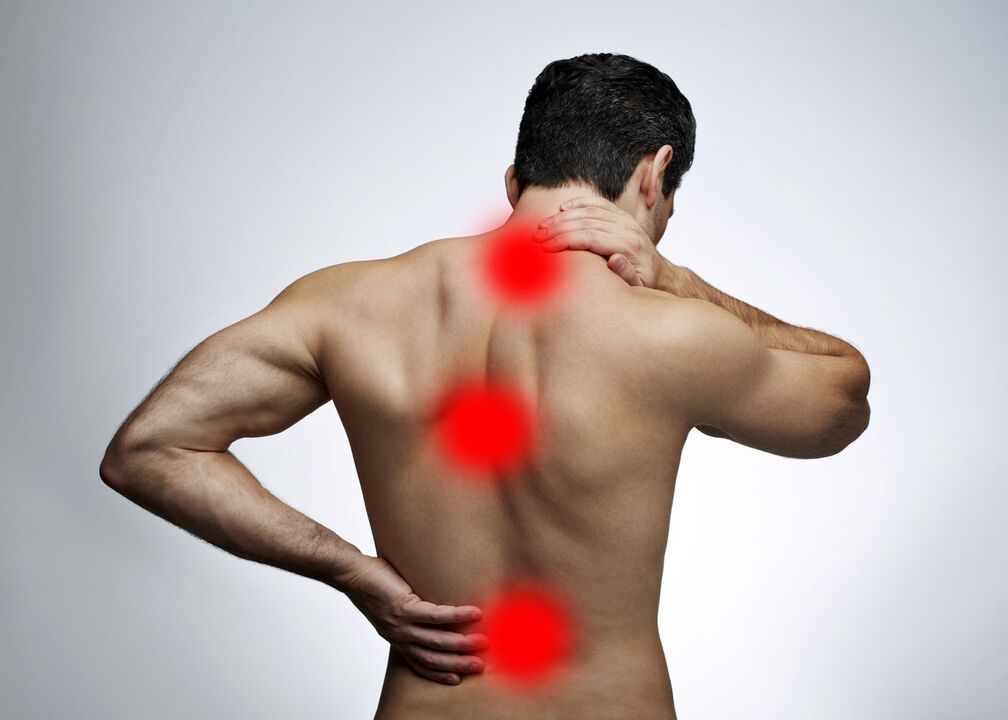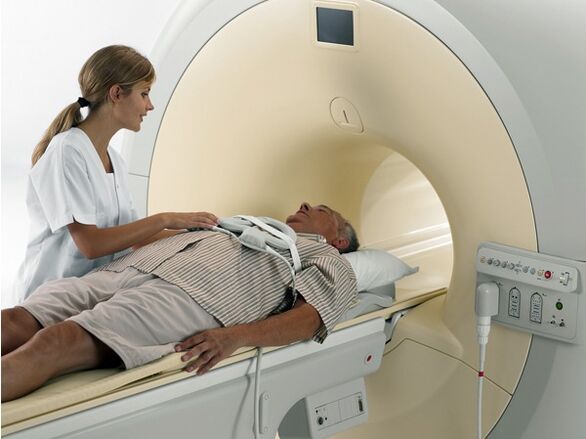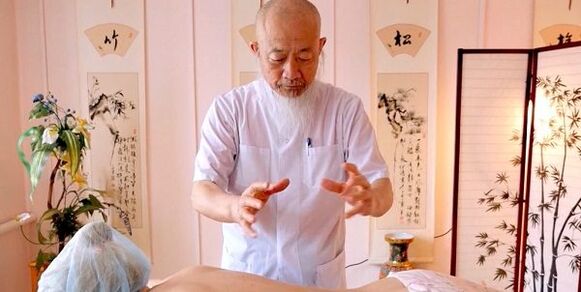Up to 76% of people per year experience back pain. This statistics affects people of all ages and professions. The causes of pain can be different, one of these is the osteochondrosis of the spine. Due to the sedentary lifestyle, the osteochondosis of the spine is increasingly found and it is not always possible to defeat it alone. Let's talk about why it presents itself and how to deal with it.
What is the osteochondrosis of the spine
There are several views of the definition. Some experts believe that it is more correct to use the general name: dorsalgia or non -specific back pain. The difficulties in defining are also associated with the fact that a variety of specialists work with this disease: neurologists, orthopedists, neurosurgery and general practitioner doctors. Sometimes a person with a diagnosis of "osteochondosis of the spine" turns into a cardiologist, since the manifestations of the disease are very similar to pain in the heart.
The term "osteochondrosis of the spine" was proposed by Hilderandt in 1933 as a multifactorial degenerative disease of the spinal motor segment. What is a spinal motor segment? These are two vertebrae located on each other and among them - an intervertebral disc. Thanks to such an articulation, the spine of a person can bend and bend, tilt and twist. But due to several reasons, the intervertebral discs lose their properties, undergo a degeneration, therefore the changes gradually influence the vertebrae themselves. That is, the essence of the osteochondosis of the spine is in the gradual destruction of the intervertebral discs.
Osteocondrosis can develop in any spine.

Due to the large load, osteochondrosis is often foundlumbar column. The symptoms are:
- Back pain, which can be acute or stupid, constant, can intensify when it moves;
- The pain can be given to the feet, to the pelvic organs, to the sacred;
- In serious cases, a violation of sensitivity or mobility, atrophy of the muscles of the lower ends can occur.
The second in presence is the osteochondosis of the cervical region, which is more often associated with a long uncomfortable position of the head, for example when working on a computer or with documents. Osteochondrosisthe cervical columnIt manifests itself from the following symptoms:
- headache and dizziness, migraine;
- vision or hearing disorders, tremoli of "flies" in front of the eyes;
- Pain can give the back of the head, shoulders, clavicles;
- Perhaps a sensitivity compromised in the hands.
Osteocondrosis is less likely to amazethoracic vertebral column, since the vertebrae are inactive with each other. The defeat in this area can be disguised as a heart or lungs. Symptoms of the thoracic osteochondosis of the spine:
- Back pain at the level of the shoulder blades, in the chest, which can intensify with fires, curves, during inspiration or exhalation;
- Skin sensitivity disorders.
Regardless of the level of damage, the pain in the osteochondosis of the spine can intensify when it is pressed on those vertebrae that participate in the process.
With the damage to several departments, we can immediately speak of the commonochondosis of the spine.
Risk factors and causes of the disease
The spine has high resistance and the effect of several provocative factors for the development of the disease is necessary. It is important to understand that the majority, if not all these factors, can influence and therefore reduce the probability of developing the disease.
- Lack of movement - at the same time, the blood supply worsens, and therefore the nutrition of all the elements of the spine;
- Even excessive physical activity is harmful and can cause damage to intervertebral records;
- Long -term stay in an incorrect and non -physiological situation: the inappropriate height of the desktop or the chair leads to the fact that a person is forced to constantly tilt his head, intuition;
- Stress - excessive tension in the muscles can lead to compression of the vessels that feed the spine;
- overweight;
- Smoking worsens microcirculation in all body tissues;
- Insufficient use of water and proteins is also influenced by the state of intervertebral discs.
The direct causes of the osteochondosis of the spine are not always obvious, but the following options can be distinct:
- Hereditary predisposition - genetically programmed characteristics of cartilage and bone tissue, in which the wear process is faster;
- Spinal injuries - various complications can develop in the place of damage, including osteochondrosis;
- professional damage, like vibrations;
- exposure to infections or chemicals;
- Natural aging of the body.
In the risk area on the development of osteochondosis of the spine there are people from various professions. These are manufacturers and athletes, surgeons and employees.
Phase of osteochondrosis and possible complications
In 1971 the description of the four phases of the osteochondosis of the vertebral column was proposed. They are not used to formulate a diagnosis, but they allow you to understand how the disease proceeds.
- Intervertebral discs become less elastic. The disc can be slightly deformed, a movement of the internal octoposy nucleus inside the disc. This phase or does not show itself in any way or present small pains.
- In the second phase, cracks can be appeared in the disc, weakening of the surrounding ligaments occurs. The connection of the vertebrae becomes unstable. There are attacks of acute pain with disabilities.
- The third stage is characterized by complete damage to the intervertebral disc. When the octopus core comes out of the disc, an intervertebral disc occurs. Deformation of the spine or violation of the nerve roots may occur.
- In the fourth phase, the surrounding fabrics are interested: vertebrae, ligaments, spinal shells. As a result, the spinal segment can completely lose mobility.
As a result of the osteochondosis of the spine in some cases, various complications occur. Problems of intervertebral discs, hernias and protrusions can lead to the narrowing of the spinal canal, the compression of the spinal cord and disability.
Depending on the level of damage, various problems are possible with the involvement of the nerve roots. These are intercostal neuralgia, compromised sensitivity and motor function of the upper and lower ends, violations in the work of the internal organs. The inflammation of the sciatic nerve, or ISHIA, not only causes severe pain, but can also lead to diseases of the pelvic organs and infertility.
In addition to the nerve roots with osteochondrosis, vertebral vessels can be crushed. In the event of violation of the blood flow in the vertebral arteries that pass in the cervical region and nourish the brain, cerebral disorders, vision problems or hearing, breathing or heart activity can develop.
Approaches to the diagnosis and treatment of osteocondrosis: generally accepted and alternative methods
In the framework of official medicineDiagnosis of osteochondrosisIt includes an inspection of a neurologist to determine the degree of damage to the nerve roots, the tests of reflexes and sensitivity.
Of instrumental methods, it is possible to use the following:
- The ultrasound of ships allows you to identify the degree of circulatory disorders, for example in the vertebral arteries;
- radiography of the spine;
- CT also uses X -ray methods, but allows you to create a three -dimensional image of the studied area, also identify small vertebral movements;
- Magnetic resonance imaging specializes in the study of soft tissues, allows you to evaluate the conditions of the spinal cord, view the internal structure of the intervertebral disc.

For differential diagnostics, laboratory tests, general tests of blood and urine and calcium metabolism indicators are used.
Osteochondrosis therapyIt is complete.
- The first and very important means in the treatment of osteocondrosis is a way of life. The normalization of working conditions, moderate and regular physical exercises, as well as healthy sleep, significantly improve patient conditions.
- For the pharmacological treatment of osteochondosis of the spine, a neurologist or a general practitioner can prescribe drugs. Very often, non -short anti -anti -inflammatory drugs are prescribed: this is the standard for the treatment of osteochondosis of the spine. They reduce pain and reduce inflammation. Musodeloxants contribute to a decrease in muscle spasm. Vitamins and antioxidants are prescribed to protect nervous tissue from damage. However, all drugs have side effects, for example, fans can negatively influence the stomach.
- In addition to drugs, physiotherapy products are used, such as massage for osteochondrosis of the spine, as well as manual therapy. In the serious complications of the osteocondrosis, surgical surgery may be required, but it is prescribed only in the absence of the effect of prolonged conservative treatment.
The treatment of osteocondrosis in classical medicine in most cases is a long process and can have negative effects on human health. Therefore, a number of drugs, in particular analgesics and relaxing muscle (especially with a sedative effect), can cause dependence and some means negatively affect the work of the gastrointestinal tract. Alternatively, you can consider the methods used, for example, in traditional Chinese medicine.
Traditional medicine of China is very popular all over the world, in many countries there are special centers and training courses. The approaches and therapy methods in the medium kingdom differ from the family and European vision of diagnosis and treatment of diseases. All diseases are considered a violation of the equilibrium and the movement of the Energy of Qi in the body and the therapeutic measures aim to restore this balance. China uses various therapeutic herbs, animal components, minerals and various methods of external influences, such as acupuncture and fasting. These methods have a wide range of indications and the minimum number of side effects.
Acupuncture
The synonyms of this method are acupuncture, reflexology. The principle of treatment through acupuncture is to set the needles in bioactive points. Each point is associated with the organ on which the impact is performed. Reflexotherapy allows relief and muscle cramps, has an anesthetic effect and helps to reduce pain syndrome. The method is safe, as most doctors use the US sterile needles. And in the case of using needles with a gold or silver coating, they are mandatory. The sensations during the procedure depend on individual susceptibility, the patient can experience tingling or numbness. It is important that the procedure is performed by a highly qualified specialist with vast experience. The incorrect installation of the needle will be useless or even harmful. In some cases, acupuncture is combined with the influence of weak electric current doses.
Moksotherapy
This is a specific way to influence active points using special Wormwood cigars. The principle of action is similar to acupuncture and is often used in combination. The steaming cigar is installed on the body in a special wooden house, while the active points are heated. Wormwood has a disinfectant, relaxing and relaxing effect.
This method is safe, since the steaming area of cigars does not come into contact with the skin, although direct methods that act on the skin are also used in some areas of China.
Massage
The massage in China practices several schools in China. They use rotation techniques, pressing with a finger, manual therapy methods. Traditional massage techniques allow you to process muscles and joints, in addition to acting indirectly on other organs and tissues, contribute to an increase in body protective forces.
Qigun

Traditional Chinese gymnastics, such as massage, has several schools. The movements of Qigong, smooth, stretching and twist, are perfect as exercises for the spine for osteochondrosis. Qigong techniques do not require special equipment and can be performed at home. However, first, it is better to choose the right exercises with the doctor, as well as process the right execution technique under the guidance of a qualified specialist.
The level of science and medicine in China is very high, a combination of traditions and innovations gives surprising results. An example of the achievement of Chinese science are the DNA therapy methods and DNA vaccines: these are these methods that are currently used to develop cancer treatment and the fight against HIV.
Prevention
Regardless of the methods of treatment chosen, the prevention of osteocondrosis does not play a role less. What can be done for the health of the spine:
- use a sufficient amount of water;
- Check the weight, do not eat too much;
- Choose the right shoes, if necessary - orthopedic sunny;
- Choose a good mattress to sleep, not very soft and giving sufficient support to the spine;
- Consume food rich in collagen (fish, turkey, jelly, various jelly);
- perform regular physical exercises;
- Regulates the height of the desktop and feces, taking into account growth.
As for the alternative methods of prevention, massage, Qigong and acupuncture, they have established themselves well, for quite understandable and described reasons.
It is important to remember that with pain in the back you can and should be fought. To change the lifestyle, it is not necessary to wait for the first signs of the disease. You can already get up from the computer, knead the neck, include walks or massage on your business list. And if the osteochondrosis of the spine has turned into a problem that interferes with life calmly, then the joint efforts of science and traditional medicine will help to return the health and joy of the movement.























